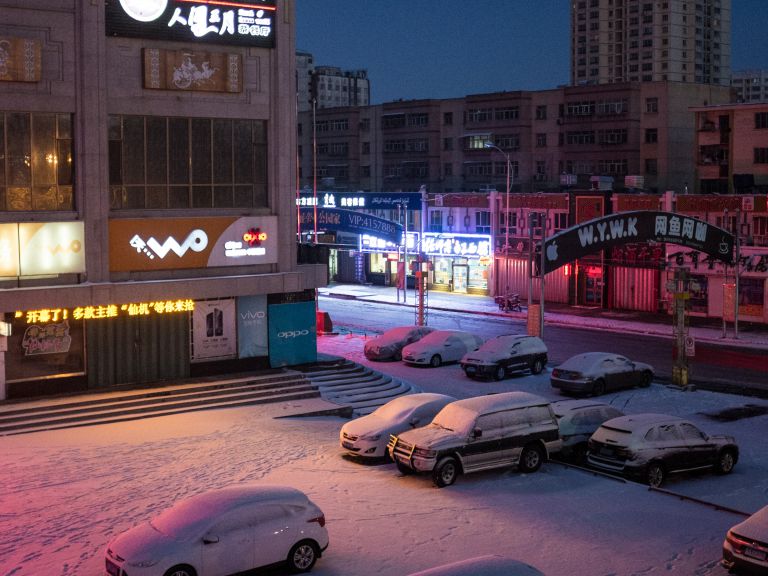Project Detail: Around Taklamakan
Contest:
LuganoPhotoDays 2015 Pro
Brand:
LuganoPhotoDays
Author:
Raphaël Fournier
Status:
Selected
Project Info
Around Taklamakan
The province of Xinjiang (« new frontier » in chinese) is located in the far western region of China, it is the biggest province of the country and it is bordering 8 other countries such as Tajikistan and Afghanistan or India and Mongolia. Xinjiang has a long history of discord between China's authorities and the Uighur ethnic minority. The Uighurs of Xinjiang are one of 55 minorities in China and they are ethnically and historically closer to the Muslim Turkic group of Central Asia. There are 7 different ethnic groups living in Xinjiang including the Uighurs, the Han, the Kazakhs etc.
As Xinjiang is a significant source of raw material and energy (40% of China’s coal), the central governement of China has been working hard on controlling and exploiting the resource rich Xinjiang by establishing a tight social, cultural and religious regulation system and by resettling millions of eastern Han chinese (the ethnic majority in China) into the wild western region of Xinjiang. It is called the « Go west » campaign. This continuous colonization influx of Han migrants has followed the extension of the Chinese railway from Urumqi to Kashgar in the West (in 1999) and from Kashgar to Hotan in the South (in 2011) around the Taklamakan desert. These infrastructural investments have led to a significant demographic shift as the share of Uighurs is in constant decline (Han chinese counts now for 55% of Xinjiang total population as the Uighurs used to account for 90% of the total population when Mao Zedong took power in 1949). As Han chinese immigrants come with hopes of making a new and better life, Uighurs suffer from the Chinese influence and discrimination at different levels, especially in education, employment, language and religion. They must adapt to the chinese way and forget their roots or be left behind.
In march 2015, 12 years after my very first trip in the area, I travelled around Taklamakan desert, the 3rd biggest desert in the world. My intention was to document the current situation in Xinjiang province, by following the main development tool used by the chinese governement to control, occupy and exploit the region: the railway. I followed its routes from Urumqi to Kashgar (in service since 1999) and from Kashgar to Hotan (in service since 2011) – see map above. Six years after the 2009 riots, and as violence is regularly erupting in various areas, the province is officially opened to tourists (there are actually none of them) and to journalists (not many either). And in spite of preventive measures (no press card on me, Small gear, tourist attitude and so on), I was checked out everyday by the Police or the militaries (sometimes 2 or 3 times a day), I have been carried to a Police station to be checked out in details for 4 hours and I have had pictures deleted from my camera twice. Anyway, I travelled by trains, buses, cars, motorbikes and taxis to make it through this 2000km long journey which was aiming at trying to grasp the general feeling of a territory under strong pressure and threatened by very radical changes. The question I have been trying to answer is : where does Xinjiang stand today ?
Captions
1- Early morning in an area mainly populated by Han Chinese - Urumqi, China, 13/03/2015
2- Due to the discovery of oil in neighboring Taklamakan desert, Korla is now home to a huge operational center for Petro China oil company. The wealthy oil town is developping fast with 20,000 people per year settling in the city and a rapid urbanization. Here, the skyline and an artificial lake on a sand storm day - Korla, China, 14/03/2015
3- A Uighur bride is boarding a car - Korla, China, 15/03/2015
4- A worker from the military farm (bingtuan) n°224 working in the fields. In the background can be seen residential buildings in construction and belonging to the same "bingtuan". "Bingtuans" are military production and construction corps set up in the 50's (1954) under Chairman Mao governement and dedicated to Xinjiang development and colonization - Between Kargilik and Hotan, China, 26/03/2015
5- Dummies with their eyes covered inside a shop of the Grand Bazaar. Xinjiang Uyghur Autonomous Region has recently banned burqa wearing in public spaces which followed other cultural and religious restrictions from Beijing, creating a resurgence of a stricter form of Islam - Urumqi, China, 12/03/2015
6- A muezin calling for evening prayer on a mosque's rooftop. Religion is tightly regulated and monitored by the government in Xinjiang. Among other rules, muezins are not allowed to use speakers to call for prayers, muslims are not allowed to pray in public, they cannot go on the Hajj (pilgrimage to Mecca) until they are 65, there is a dress code including punishments for beards and people under 18 are banned from going to the mosque - Kashgar, China, 22/03/2015
7- Uighur women during a traditional Uighur dance show rehearsal in celebration of Newroz, the traditional Iranian new year holiday, also celebrated in kurdish areas - Kashgar, China, 19/03/2015
8- Uighur men watching a traditional Uighur dance show rehearsal in celebration of Newroz, the traditional Iranian new year holiday, also celebrated in kurdish areas - Kashgar, China, 19/03/2015
9- A little girl holding a balloon in the ruins of traditional houses in an old neighborhood of Kashgar where many people were forced to leave to the outskirts creating resentment for losing part of their culture - Kashgar, China, 21/03/2015
10- A man showing his pigeon in Yarkand where the Internet has been cut off by chinese government since July 2014 after a series of riots. Southern Xinjiang and Kashgar area is currently considered very unstable as regular eruptions of violence cause deaths , Yarkand, China, 24/03/2015
11- Two guards and their shields at the entrance of a hotel. Security has become top priority to local and central government authorities after 2009 outbreak. The 2009 riots have led Beijing to enforce radical security measures, only widening the gap between the Uighur and the Han populations - Yengisar, China, 24/03/2015
12- A young Uighur holding a cigarette in his mouth, Hotan, China, 27/03/2015


















